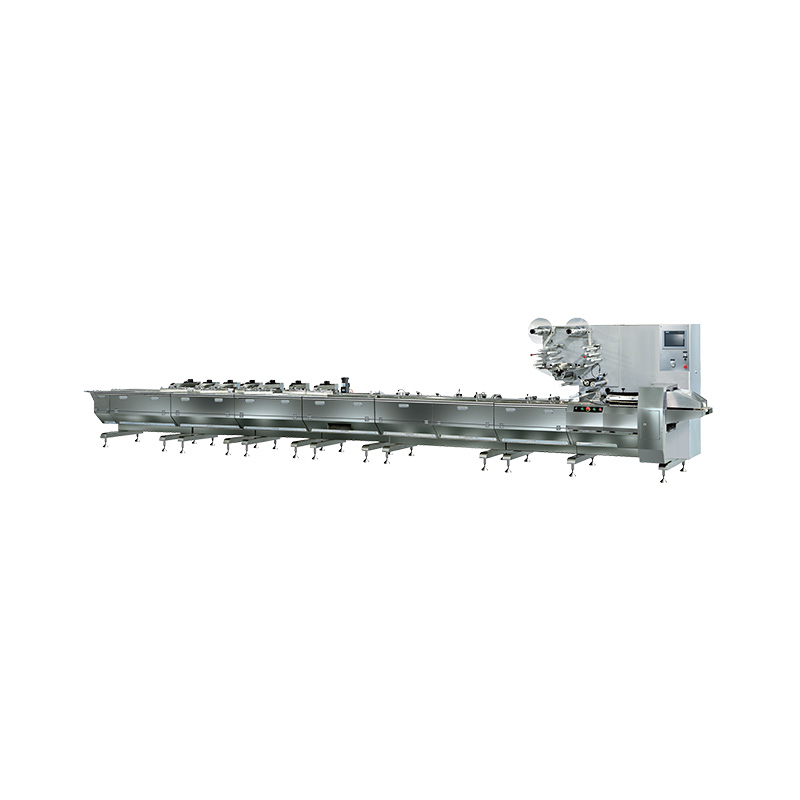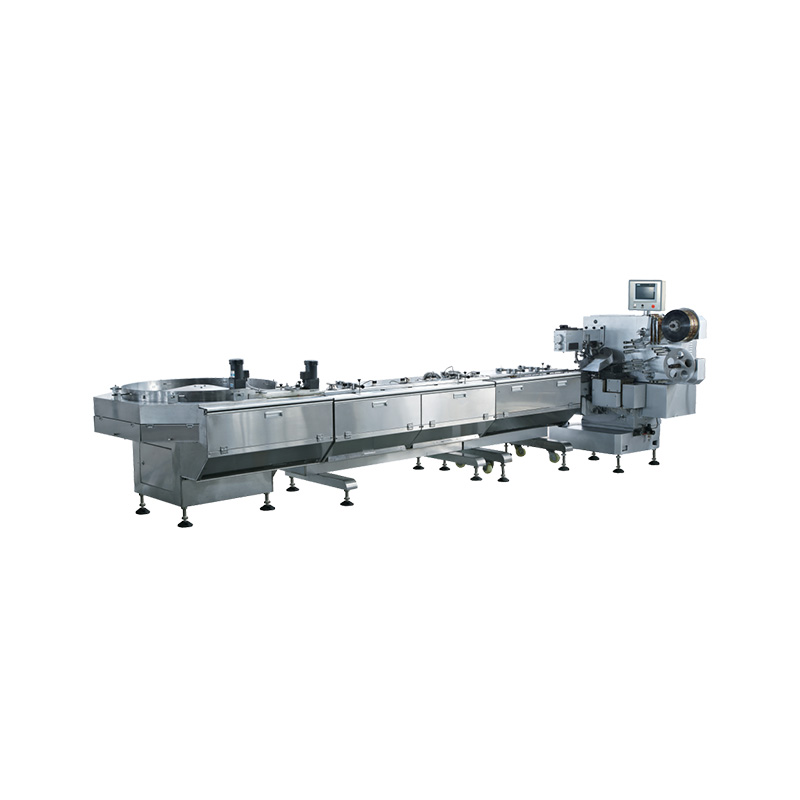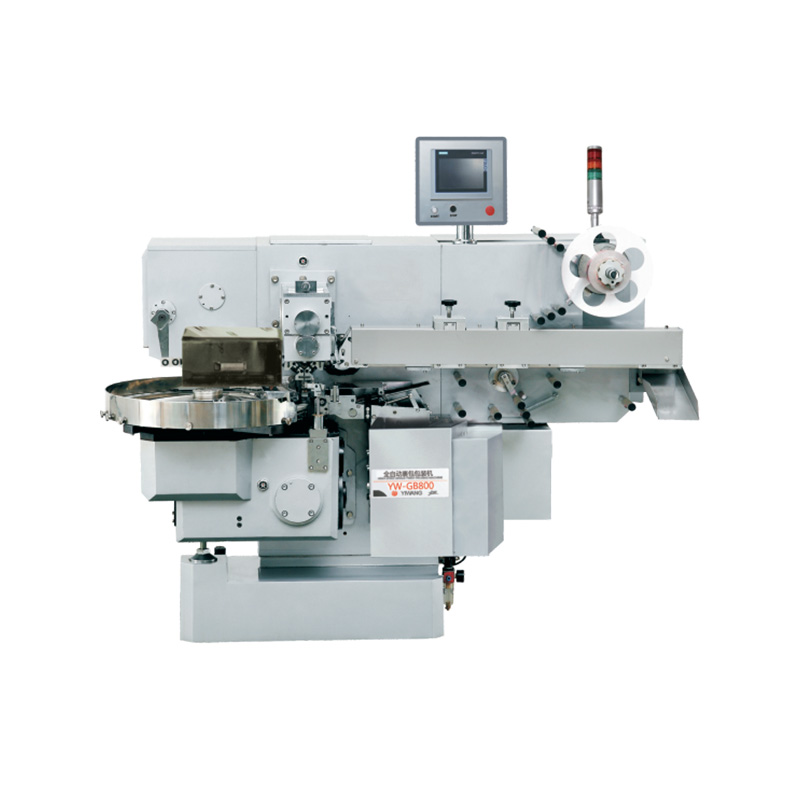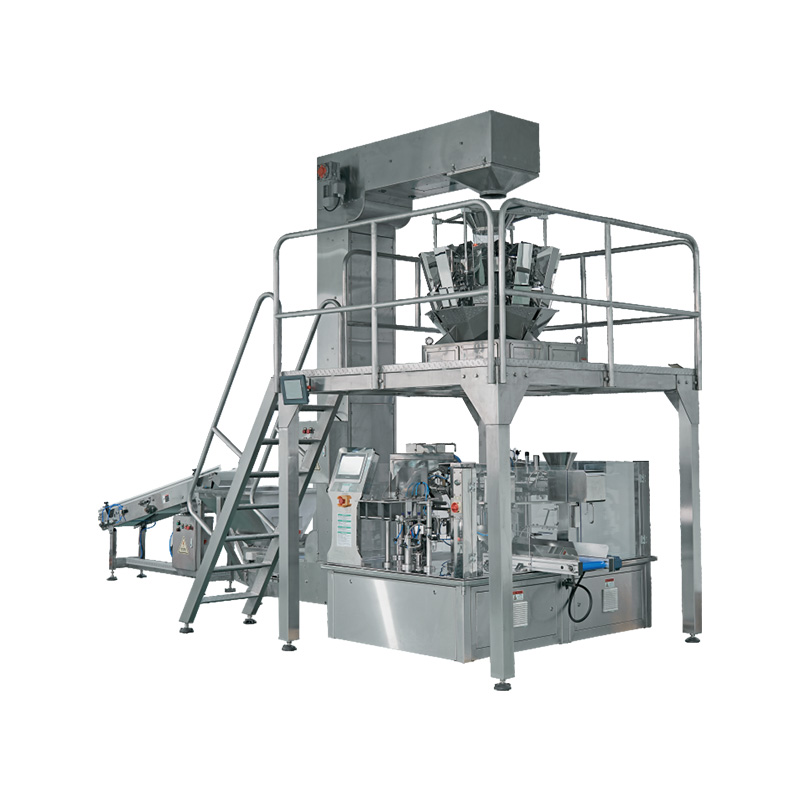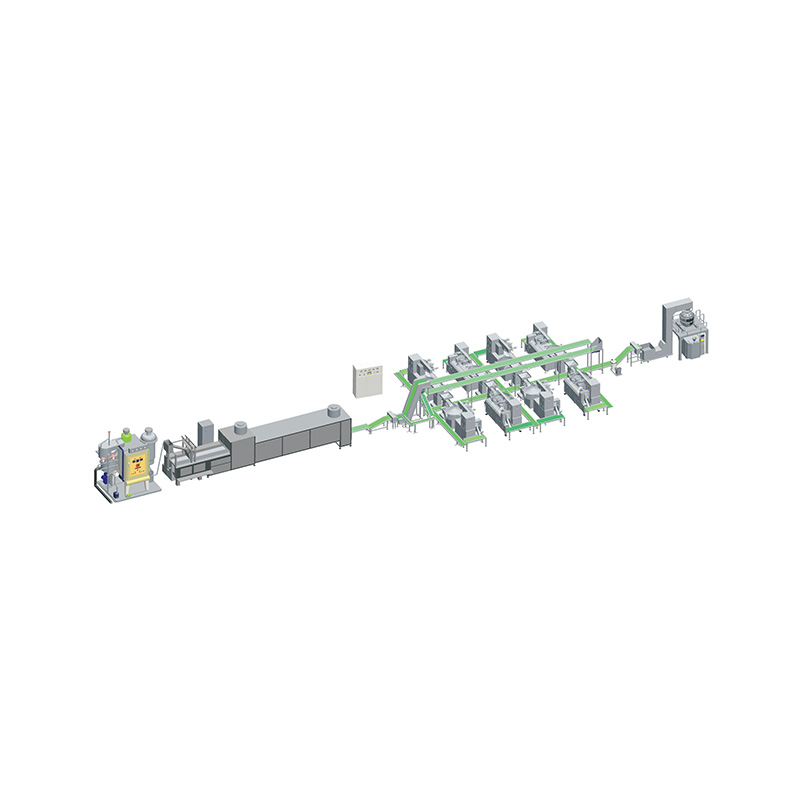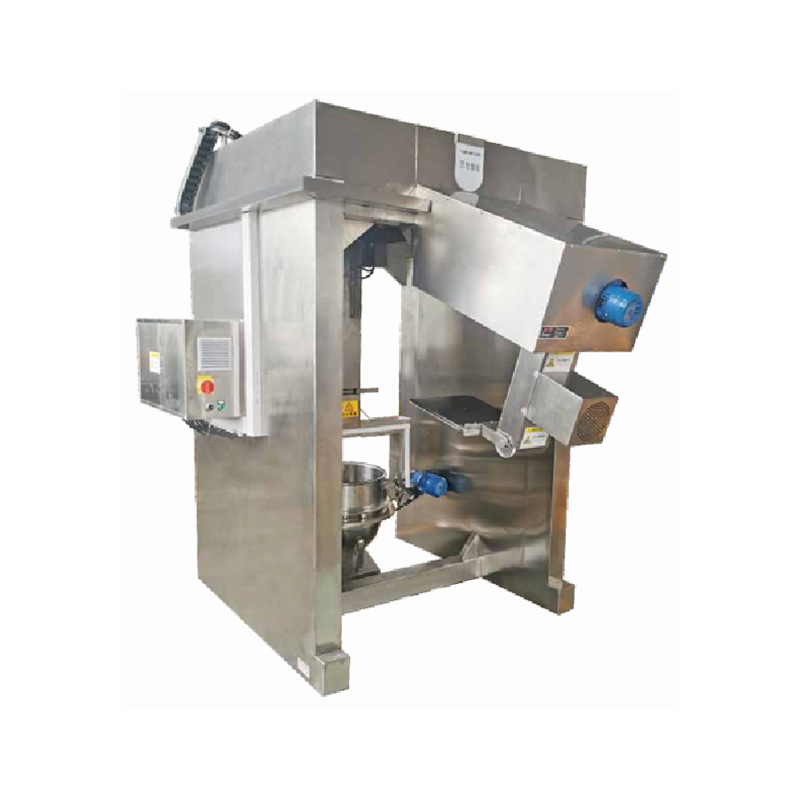What Is a Twist Packaging Machine
A Twist Packaging Machine is a piece of equipment used to wrap individual products by enclosing them in a sheet of film or paper and then securing both ends with a simple twist. This type of wrapping is commonly recognized in confectionery items such as candies, chocolates, and toffees, but it is not limited to sweets alone. It provides a practical and recognizable way to package small units while keeping them hygienic and visually appealing.
The Basic Concept
The principle behind twist wrapping is straightforward. The machine places a product into a piece of wrapping material, gathers the ends, and twists them tightly. This closure keeps the product covered without the need for adhesives, heat sealing, or complex processes. The result is a secure, easy-to-open wrap that can be scaled for mass production.
Why Businesses Use It
Companies adopt twist wrapping for several reasons: it offers speed in packaging, consistency in product appearance, and a user-friendly experience for consumers. The closure is instantly recognizable and easy to open, making it popular for products that are consumed quickly or purchased in bulk.
| Feature | Benefit for Producers | Benefit for Consumers |
|---|---|---|
| Simple sealing method | Reduced complexity in packaging | Easy to unwrap by hand |
| Individual wrapping | Hygiene and portion control | Freshness and convenience |
| Distinct appearance | Uniform product presentation | Visually familiar closure |
Types of Twist Packaging Machine
Twist packaging machines have developed into several categories, each designed to handle different wrapping requirements. While they share the same core principle of securing products with a twisted end seal, the variations are based on automation, wrapping format, and production scale. Understanding the main types helps businesses choose a machine that fits their specific process and product style.
1. Manual Twist Packaging Machine
Manual machines are often applied in small-scale production or specialty packaging lines. Operators place products by hand and initiate the wrapping cycle. These machines are usually selected when flexibility and low-volume packaging are required.
2. Semi-Automatic Twist Packaging Machine
Semi-automatic models combine manual feeding with an automatic twist action. They can be useful for medium-scale operations where a balance between human supervision and mechanical assistance is needed. This type allows for a gradual transition from manual to automated systems.
3. Fully Automatic Twist Packaging Machine
Fully automatic versions are designed to handle continuous production without constant human input. Products are fed through conveyors or hoppers, then wrapped and twisted with precision. These machines are commonly chosen in industries where efficiency and consistent packaging quality are important.
4. Single Twist vs. Double Twist
The wrapping style itself can differ. A single twist secures one end of the package, while a double twist seals both ends. The choice often depends on the product type, its preservation needs, and the desired presentation.
5. Customized Twist Packaging Machine
Some manufacturers provide tailored machines that can be adapted for specific shapes, materials, or branding styles. Customized solutions are considered when standard options cannot meet unique product designs or marketing requirements.
| Machine Type | Production Scale | Typical Use Case |
|---|---|---|
| Manual | Low | Small workshops, artisanal packaging |
| Semi-Automatic | Medium | Mid-range factories, transitional setups |
| Fully Automatic | High | Large-scale continuous packaging |
| Single Twist / Double Twist | Flexible | Depending on sealing style and appearance |
| Customized | Variable | Unique products or specialized packaging |
How a Twist Packaging Machine Works
A Twist Packaging Machine operates through a straightforward yet efficient mechanism designed to enclose a product in wrapping material and seal both ends by twisting them securely. The basic steps of operation are simple but crucial to ensuring product protection and consumer convenience.
Step-by-Step Process
Here's a general breakdown of how a twist packaging machine works:
1.Product Placement
Products are fed into the machine via a conveyor belt or manually placed, depending on the system's automation level. Each product is positioned within a packaging material, typically a roll of film or paper.
2.Wrapping the Product
The wrapping material is pulled around the product. As the material is dispensed, it forms a tube that encloses the item completely. The system ensures the film or paper tightly wraps around the product, securing it without the need for adhesive.
3.Twisting and Sealing
Once the product is wrapped, both ends of the material are twisted by the machine's mechanism. Depending on the model, the twist is done mechanically or semi-automatically by the operator. This step ensures the package remains closed during transportation and storage.
4.Cutting and Finalizing
After the ends are twisted, the excess material is trimmed. This ensures uniformity and prevents excess waste, giving the product a neat, finished appearance.
5.Discharge and Collection
Finally, the wrapped products are discharged from the machine and sorted, either manually or automatically, into packaging containers or trays for further processing.
Types of Wrapping Material Used
The wrapping material plays a crucial role in the packaging process, affecting product preservation and branding. Common materials include:
- Plastic Film: Widely used for products requiring moisture protection or freshness.
- Biodegradable Film: A sustainable option gaining popularity for eco-conscious businesses.
- Foil Wrap: Often used for products requiring a more premium appearance or a higher level of protection.
| Material Type | Common Use Case | Advantages |
|---|---|---|
| Plastic Film | Food, sweets, small electronics | Moisture and air resistance |
| Biodegradable Film | Eco-friendly packaging | Reduced environmental impact |
| Foil Wrap | Premium products, gifts | Superior protection and appearance |
Automation and Efficiency
The level of automation determines how the machine operates. In manual models, operators handle much of the process, while semi-automatic systems provide some mechanical assistance. In fully automatic models, the entire process is controlled by the machine, from feeding products to twisting and sealing. This automation not only reduces labor costs but also speeds up production while maintaining consistency across all units.
The Role of Precision
The twist mechanism plays an essential role in ensuring the product is securely sealed. A precise twist guarantees the packaging does not unravel during shipping or handling. It also helps in providing a tight seal to preserve the product’s quality.
Applications of Twist Packaging Machine
Twist Packaging Machines are widely used across various industries for packaging a broad range of products. The flexibility of these machines allows them to be adapted for different applications, from food items to pharmaceuticals and even retail products. The ability to securely wrap and seal products while providing an attractive presentation makes twist packaging a popular choice in diverse sectors.
1. Food Industry
The food industry is one of the largest users of twist packaging machines. Confectionery items, snacks, and small food products benefit from the twist wrap method due to its ability to preserve freshness and enhance the presentation. Examples include individually wrapped candies, chocolates, cookies, and chewing gum.
Why Twist Packaging Works for Food:
- Freshness: The packaging creates an airtight seal, helping to maintain the product's flavor and texture.
- Portion Control: Ideal for single-serving or portion-sized products.
- Consumer Convenience: Easy to open and access the product.
2. Pharmaceutical and Healthcare Products
Twist packaging is also commonly used in the pharmaceutical industry for packaging individual doses of medicine, such as pill packets, tablets, and small medical products. This type of packaging ensures hygiene and precise portion control.
Benefits for Pharmaceuticals:
- Hygiene: Keeps individual doses protected from contamination.
- Portion Control: Provides exact dosages in easy-to-open wrappers.
- Branding: Offers an attractive presentation for pharmacy shelves.
3. Cosmetics and Personal Care
Twist packaging is often used for sample-sized cosmetics, personal care items, and toiletries. Small sample tubes of creams, lotions, or shampoos are wrapped in this format to give consumers a trial-sized portion before committing to a full-size purchase.
Advantages for Cosmetics:
- Protection: Keeps products sealed and safe from external contaminants.
- Portability: Convenient for on-the-go use.
- Attractiveness: Adds a premium touch to samples or promotional products.
4. Retail and Promotional Products
Retailers and businesses also use twist packaging for promotional items or small goods such as toys, gifts, and novelty items. Packaging these products with twist wrappers helps create a visually appealing package that is easy for customers to handle and store.
Why Retailers Prefer Twist Packaging:
- Cost-Effective: Suitable for both small and large-scale production runs.
- Versatility: Can be adapted for a wide range of product types.
- Visual Appeal: A common packaging style that stands out on the shelf.
5. Gift and Specialty Packaging
For premium items, gifts, or seasonal products, twist packaging is often used to give a visually appealing finish. Whether it's chocolates, small accessories, or festive products, the twist seal gives a unique, attractive appearance that enhances the unboxing experience.
Benefits for Specialty Packaging:
- Customization: Can be adapted to different shapes and sizes for unique products.
- Aesthetic Appeal: Offers an elegant and recognizable look.
- Consumer Experience: Provides a fun and easy-to-open experience for customers.
Industry Overview:
| Industry | Key Benefits of Twist Packaging | Examples of Products |
|---|---|---|
| Food | Freshness, portion control, easy-to-open | Candies, chocolates, cookies, snacks |
| Pharmaceutical | Hygiene, portion control, brand recognition | Pills, tablets, medical supplies |
| Cosmetics & Personal Care | Protection, portability, attractive packaging | Creams, lotions, sample-sized products |
| Retail & Promotional | Cost-effective, versatility, visual appeal | Toys, gifts, promotional items |
| Gift & Specialty | Customization, aesthetic appeal, consumer experience | Premium gifts, holiday items, novelty goods |
Buying Guide for Twist Packaging Machine
Selecting the right Twist Packaging Machine is an important decision for businesses that aim to optimize their packaging process. While the fundamental function of wrapping products remains the same across models, there are several factors to consider to ensure that the chosen machine aligns with production needs, product types, and operational goals.
1. Assess Production Requirements
Understanding the volume of products you plan to package is the first step. Low-volume operations may benefit from manual or semi-automatic machines, which allow flexibility without extensive infrastructure. Higher-volume production lines often require fully automatic systems for consistent efficiency.
Key Considerations:
-
Daily production capacity
-
Product size and shape
-
Frequency of packaging changes
2. Consider Automation Level
Automation affects both operational efficiency and labor requirements. Semi-automatic machines offer a combination of human control and mechanical assistance, while fully automatic machines handle the entire wrapping process independently. Choosing the right automation level depends on workforce availability, production speed, and quality control priorities.
3. Evaluate Material Compatibility
Twist packaging machine work with a variety of wrapping materials, including plastic film, biodegradable options, and foil wraps. Consider the type of material you intend to use, as it affects both the machine's operation and the final presentation of your products. Machines with flexible material handling provide adaptability for future product variations.
4. Examine Maintenance and Support
Reliable maintenance and technical support are crucial for sustained operations. Choosing a provider that offers accessible service, guidance on operation, and parts availability ensures that your packaging process experiences minimal downtime.
5. Consider Space and Integration
Space within your production area and how the machine integrates with existing workflows are practical considerations. Machines vary in size and layout, so ensuring compatibility with your line can prevent operational bottlenecks.
Why Choose Rongchuang
We offer twist packaging solutions that focus on efficiency, adaptability, and user-friendly operation. Our machines are designed to accommodate a range of product types and production scales while maintaining a reliable and consistent packaging process. By working with us, businesses gain access to:
-
Flexible Solutions: Machines suitable for small, medium, or continuous production lines.
-
Material Adaptability: Support for multiple wrapping materials, including environmentally conscious options.
-
Technical Assistance: Guidance for setup, operation, and ongoing maintenance.
-
Practical Design: Compact layouts that integrate easily into existing production workflows.
| Feature | Benefit to Business |
|---|---|
| Flexible Production Scale | Suitable for various output levels |
| Material Compatibility | Accommodates different wrapping films |
| User-Friendly Operation | Simple controls for smooth workflow |
| Technical Support | Ongoing guidance for maintenance and use |
Twist Packaging Machine play an important role in modern production by combining efficiency, product protection, and consumer-friendly presentation. From understanding what the machine is, to exploring the types, how it works, and where it can be applied, businesses gain a clear view of how this technology supports packaging operations across industries.
Choosing the right machine involves considering production volume, automation level, material compatibility, and workflow integration. With careful selection and reliable support, companies can maintain consistent packaging quality, adapt to different products, and meet operational goals.
By leveraging the versatility and practical design of twist packaging machine, businesses can improve both efficiency and presentation, ensuring that their products are protected, visually appealing, and convenient for consumers.

 English
English